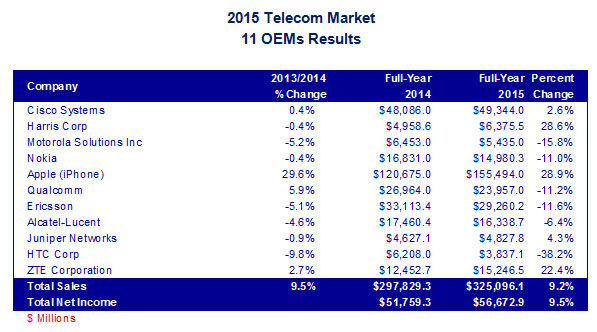| |
277
0

Thus it is proved that an Indifference Curve cannot slope upward to the right, nor can it be horizontal or vertical. The only possibility is that it must slope downwards to the right. The consumer will get additional supplies of oranges by sacrificing diminishing quantities of bananas. Most economic characteristic of indifference curve textbooks build upon indifference curves to introduce the optimal choice of goods for any consumer based on that consumer’s income. Classic analysis suggests that the optimal consumption bundle takes place at the point where a consumer’s indifference curve is tangent with their budget constraint.

This gives the conclusion that as the consumer travels down the indifference curve, the marginal significance of x has become greater as the respective angles of tangents are greater. This is wrong and against the fundamentals of economics and consumption. On the contrary we shall see what would be the result if the curve is concave. Let us consider the logical inferences or conclusions if the indifference curve does not slope downwards from left to right. If it not like that, it should be either parallel to X axis or vertical or it should be an upward sloping curve as shown in the Figure 1.
Suppose two indifferent curves cut each other at point K as shown in Figure 3. This means that points K and T which are on the same indifference curve IC2 show equal satisfaction; similarly points K and S which are on the same indifference curve IC1 show equal satisfaction. As the consumer moves along the indifference curve he is getting a fixed quantity of y but increasing quantities of x. So the consumer cannot be indifferent, as having rational behavior, he would prefer D more than C, C more than B and B more than A and the level of satisfaction is not the same.
What Defines the Convexity of Indifference Curves?
Marginal utility refers to the utility gained from the consumption of an additional unit of a good or service. Hicks gave his own method of ordinal (qualitative) measurement of utility as opposed to the cardinal (quantitative) measurement. Paul Boyce is an economics editor with over 10 years experience in the industry. Currently working as a consultant within the financial services sector, Paul is the CEO and chief editor of BoyceWire. He has written publications for FEE, the Mises Institute, and many others.
That’s why the indifference curve is also known as the Iso-Utility curve or equal utility curve. Cardinal measurement of utility by Marshall is based on hypothetical assumptions which are of course against the realities of life. E.g. the income of the consumer, price of the commodity and prices of substitutes remain constant whereas in real life these constants” are actually variables.
Perfect Substitutes
Indifference curves slope downward to the right because the consumer has to reduce the consumption of one commodity (y) if he increases the consumption of commodity-x. In order to maintain the same level of satisfaction, he has to increase the consumption of commodity x with the decrease in the consumption of commodity y. If an indifference curve touches the Y axis at a point P as shown in the figure, it means that the consumer is satisfied with OP units of y commodity and zero units of x commodity. This is contrary to our assumption that the consumer wants both commodities although in a smaller or larger quantities.
It means an indifference schedule refers to a schedule that displays several combinations of two goods that give an equal amount of pleasure to the consumer. To illustrate the indifference curve, let us consider two goods X and Y. A rational consumer is constantly indifferent in selecting the blends of accessible as every blend holds an equal level of satisfaction.
Criticisms and Complications of the Indifference Curve
Therefore an indifference curve cannot be horizontal since different combinations on the curve differ in significance. The sloping down indifference curve indicates that when the amount of one commodity in the combination is increased, the amount of the other commodity is reduced. This must be so if the level of satisfaction is to remain constant on the same indifference curve. The slope of the indifference curve at any point is the negative marginal utility of good A as a proportion of the marginal utility of good B.
The farther from the origin, the greater utility is generated across all consumption bundles on the curve. When an individual consumes goods and services, the satisfaction gained or lost from consumption is called utility. Consumer preferences are defined by the consumption bundles that consumers face. A collection bundle is a bundle that maximizes the consumer’s total utility, given the consumer’s budget constraints.
The marginal do not rate of substitution increases nor does it remain constant. The marginal rate of substitution on the contrary goes on diminishing. The indifference curves are very useful because they are related directly to consumer choices and preferences. Due to this property, indifference curves are a popular tool to yield the total demands of a commodity in the market when the availability of the other commodity is known.
Law of Diminishing Marginal Utility: Causes, Assumptions, Criticism
In the above figure, at point A, IC1, and IC2 intersect each other. Hence, at point A, both curves yield the same level of satisfaction. Observing such we cannot tell that which of these indifference curves gives higher satisfaction.
Demand Curves: What Are They, Types, and Example – Investopedia
Demand Curves: What Are They, Types, and Example.
Posted: Sat, 25 Mar 2017 20:11:10 GMT [source]
This combination will yield him the same satisfaction as by keeping OM units of money. It means if the income of the consumer changes or prices of goods falls or rise in the market, these changes will have no effect on the scale of preference of the consumer. It is further assumed that scale of preference of a consumer is not influenced by the scale of preference of another consumer. The money income or budget of each consumer is given which is spent on purchasing various goods and services to satisfy his wants. He tries to maximize his satisfaction with his given income or budget constraint. In order to understand this more clearly we have to study the exact purport and significance in passing from one point to another on an indifference curve which is convex to the origin.
In order to explain his approach, Hicks made use of his indifference curves’. Firstly, the Indifference Curves are not based on the cardinal measurability of utility. Secondly, the rate of substitution between the two commodities need not be the same in all the indifference schedules. It is therefore not necessary that the Indifference Curves should be parallel to each other.

Following indifference curves show the situation In the diagram two indifference curves IC and IC1 have been shown. Hence we can say that two indifference curves never intersect each other because they show different levels of satisfaction. As the consumer moves down an indifference curve taking more of x commodities, the marginal significance of x declines in terms of y commodities. As the marginal significance of x declines, the tangent of the angle TtO should also decline as both are directly related in the figure. An indifference curve consists of various combinations of two merchandise.
Indifference Map
As the indifference curve is always convex to the origin it shows that the Marginal Rate of Substitutions (MRS) gradually falls, to enable the consumer to move from one combination to another of two commodities or more. Here, f(x) represents a function of good x, which describes the relationship between the quantities of goods x and y that yield the same utility level. In the indifference curve IC1 at point P the consumer is having OM quantity of Bananas and ON quantity of Biscuits. Different values of c correspond to different indifference curves, so if we increase our expected utility, we obtain a new indifference curve that is plotted above and to the right of the previous one.
- So, consumers may want more amounts of both goods or of at least one leading to a preference for higher levels of indifference curves.
- If a good satisfies all four properties of indifference curves, the goods are referred to as ordinary goods.
- On account of the indifference or neutrality of an individual consumer, these curves are also called indifference curves.
- It is notable that the indifference curve has an origin point and there are no intersections between any sorts of pairs of indifference curves.
Thus, an indifference map is a series of indifference curves for a particular consumer’s consumption of any two commodities. The buyer’s preferences can be completely described by an infinite number of ICs in the two-dimensional space, each IC representing a distinct level of satisfaction. In the microeconomic analysis, an indifference curve (IC) is a graph that shows different combinations of two goods or services that provides the same level of total satisfaction to the consumers. A consumer is always indifferent among any of the bundles of two goods on an indifference curve as they all provide the same satisfaction; the consumer has no preference for one combination over the other.
It indicates that the optimal consumption bundle – the marginal rate of substitution between goods A and B – is the ratio of their prices. Henceforth an indifference curve is a curve screening the different combinations of two products that yield identical satisfaction or total utility to a consumer. In summary, the formula for the indifference curve depends on the specific utility function used to represent a consumer’s preferences. By using a mathematical formula to represent the indifference curve, economists can better understand and analyze consumer decision-making and the trade-offs between different goods.